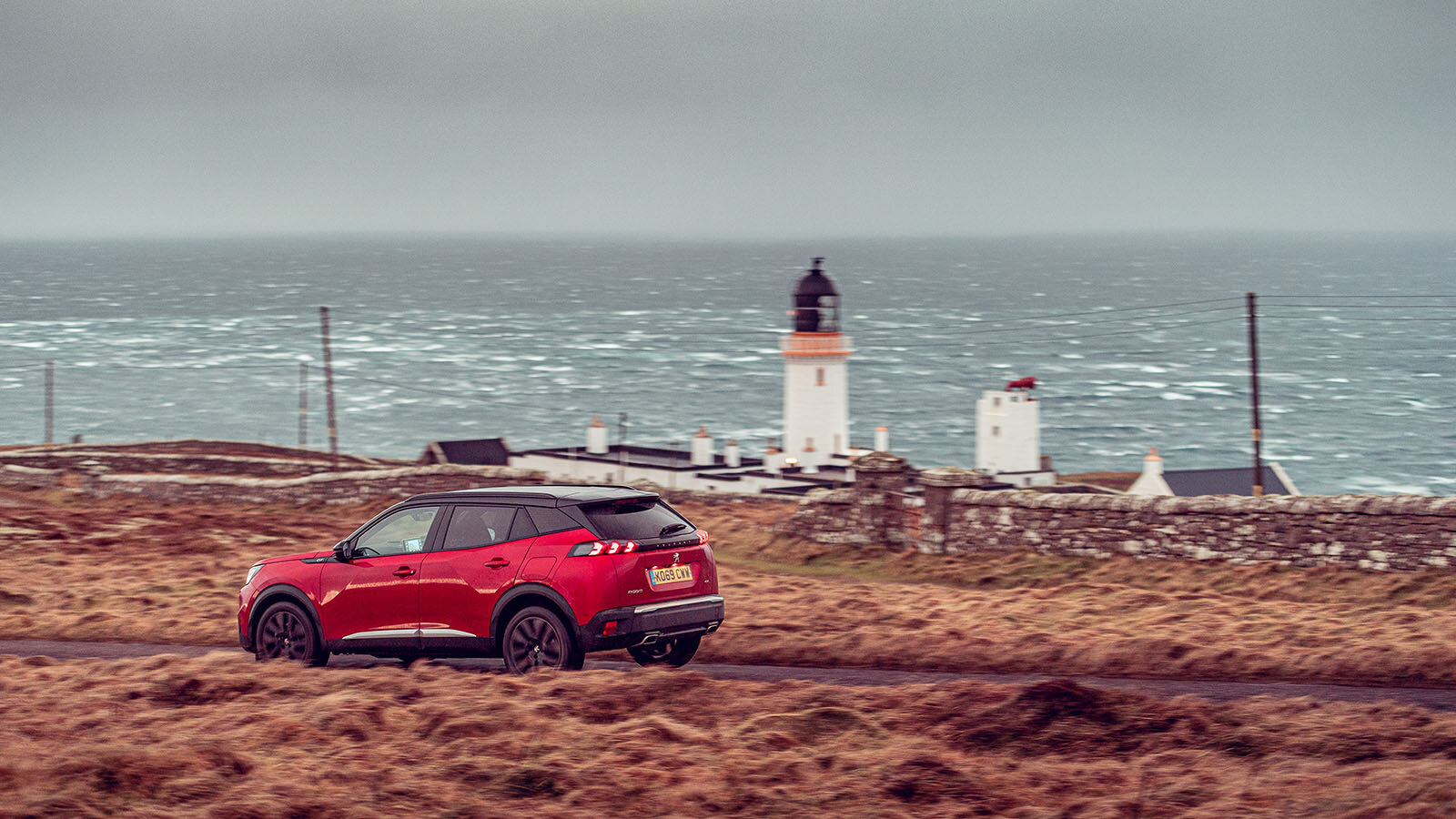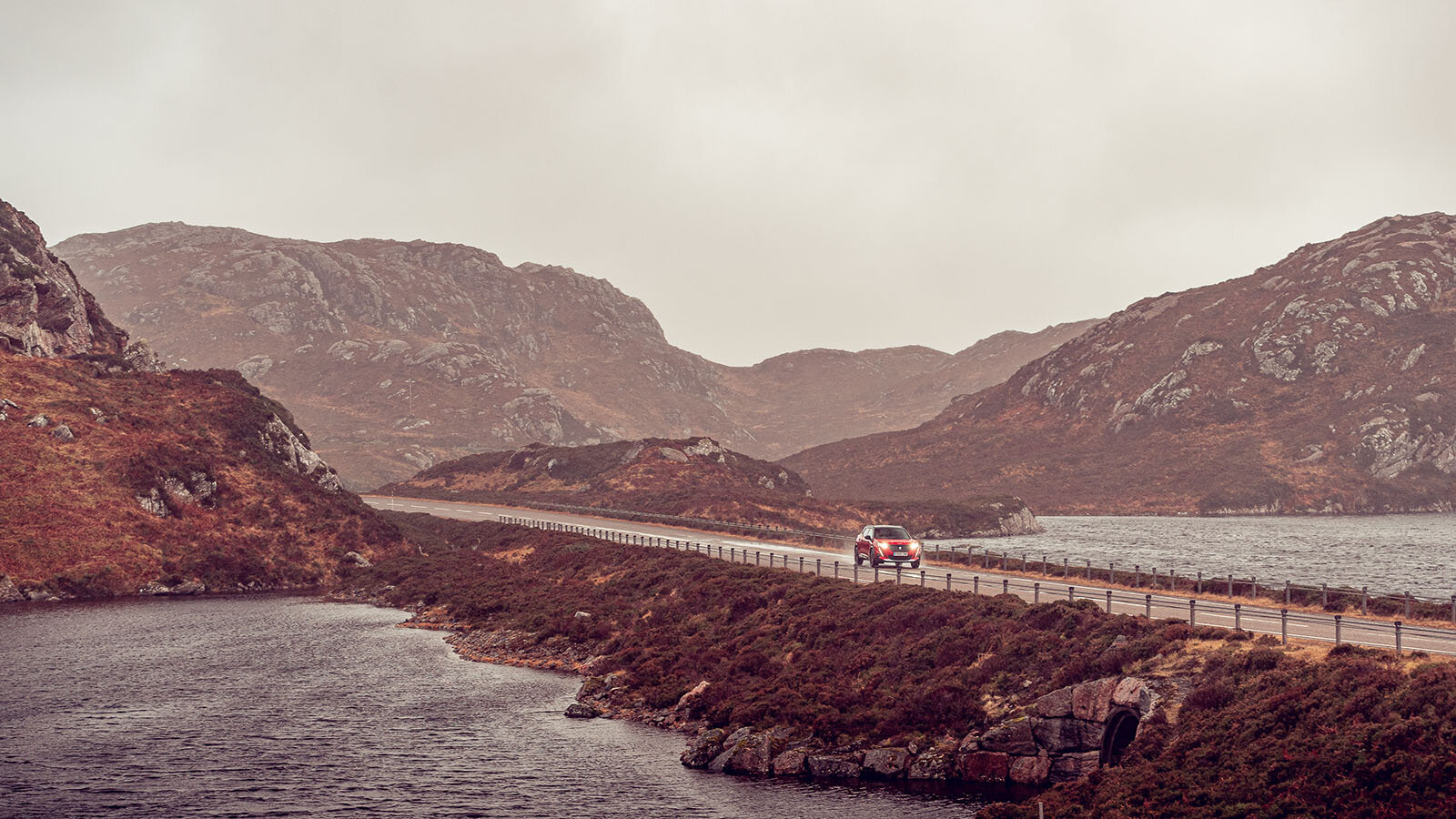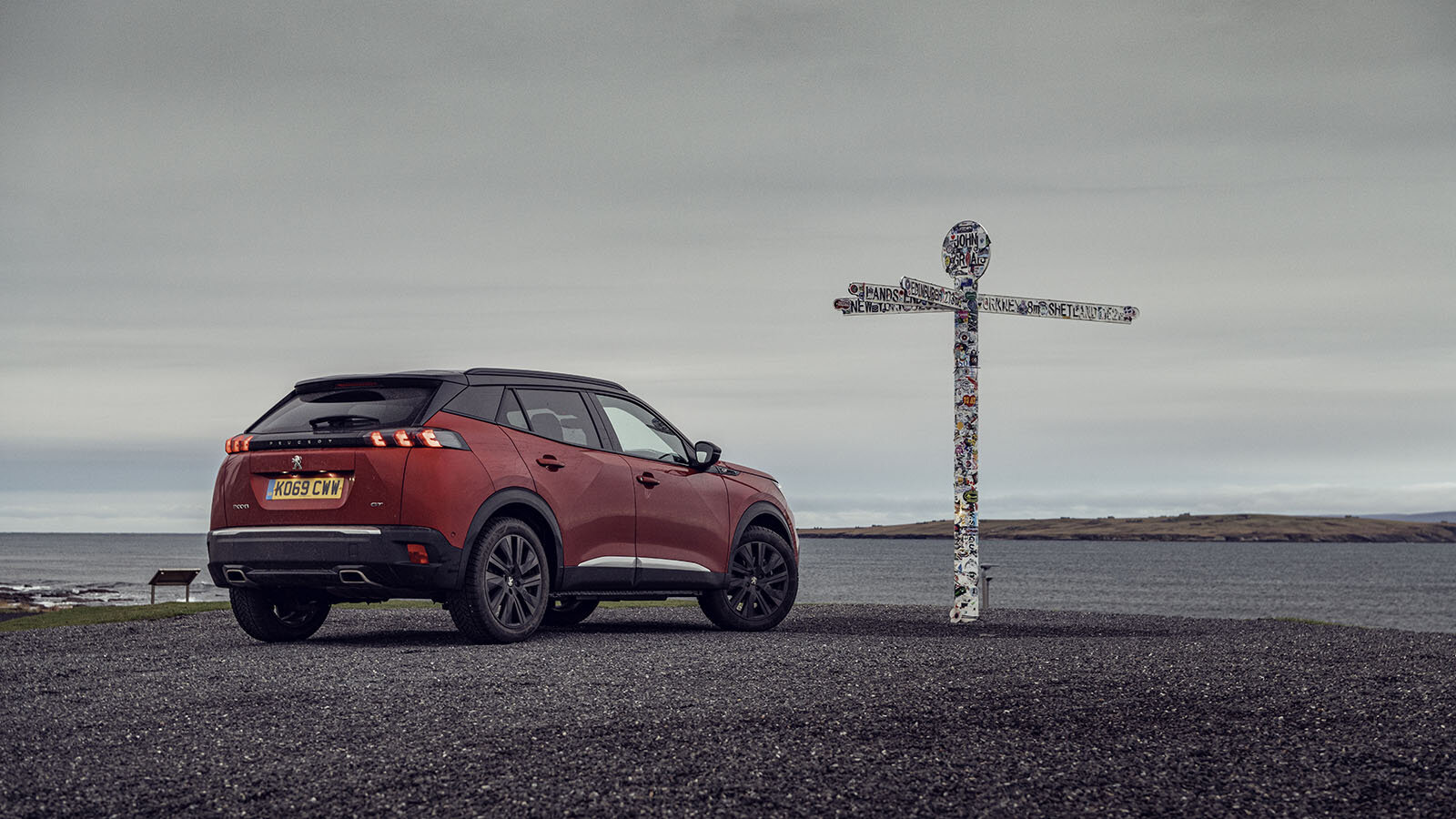2008 SUV: Edinburgh to John O'Groats
Part 3
John o’groats – we made it!
After so much solitude it’s a shock to see the Dounreay nuclear power station, built on a WW2 airfield in the 1950s. It provides a chunk of employment up here, especially in Thurso, mainland Britain’s most northerly town, but the reactors will be de-commissioned in the next few years.
As dusk begins to fall, we make our way to Dunnet Head, the northernmost point in Britain. The lighthouse flashes warnings out to sea while below us seabirds wheel around the cliff faces in strong winds, landing gear out like an about-to-stack-it Eddie the Eagle. The Orkney Islands are clearly visible, so too the Jenga-like stack of the Old Man of Hoy. John O’Groats is a further 14 miles down the road, and actually 11 miles further south than Dunnet Head, but the village of just 300 is the most northerly populated place on the mainland, making it a more logical end-point for trips that span the length of Britain.
We pull the Peugeot 2008 on to the wide gravel path and next to the tourist signpost that says it’s 874 miles back to Land’s End, 3230 miles to New York, or another 152 miles on a boat to Scotland’s most northerly islands, the Shetlands. It also helpfully points us 273 miles back towards Edinburgh. With an overnight stay in Dunnet to re-charge (and a visit to the local distillery, see below), a gorgeous coastal route down Scotland’s east side to enjoy and a car as well-rounded as the Peugeot 2008, there are plenty of good reasons to keep on driving.
Technology in action
Park Assist
Our 2008 was fitted with the Full Park Assist option, a £250 extra that’s available with the auto gearbox. Activate the system via the central touchscreen and the next step is to choose from either a parallel park on the left- or right side of the road, or a perpendicular park, say if you’re looking for a space in a supermarket car park.
Make that choice, drive along at no more than 19mph between half a metre and 1.5 metres from the parked cars, and the 2008 will flash up a green ‘P’ and steering wheel alert when it spots a space large enough to fit the compact SUV (ie 60cm longer than the car in parallel spaces, or 70cm for perpendicular spaces). Then just put it into reverse and it does the steering – leaving the driver to take care of the pedals and gear selection. Parking sensors front and rear cut the workload too.
Need to know
Peugeot 2008 GT Premium 1.2 PureTech 155 EAT8
Price £30,930
Engine 1199cc 12v turbocharged three-cylinder, 153bhp @ 5500rpm, 177lb ft @ 1750rpm
Transmission Eight-speed automatic gearbox, front-wheel drive
Performance 8.2sec 0-62mph, 130mph, 41.7-46.6mpg, 137-153g/km CO2
Weight 1205kg
Peugeot pit stops
Ness Walk hotel, Inverness
Our first night’s stop was at Ness Walk, a lovely five-star hotel tucked away on the banks of the River Ness, only a short walk from Inverness town centre. Based around a restored Grade B-listed 19th century house, but updated with modern design and architecture, Ness Walk had a warm, lavish, welcoming feel after a long day’s adventuring.
The three-course meal at the Torrish restaurant went down particularly well – first hand-dived West Coast scallops with golden raisins, cauliflower puree and tiny chunks of black pudding for both of us, then the perfectly pink beef rump for me, soy-glazed duck with
pink-pickled ginger for the more adventurous Alex.
Dessert sounded equally good, but generous portions (and jumping the gun with too much delicious sour-dough bread and home-made butter) meant we had to turn back before reaching the summit on this occasion, choosing instead to rest in the bar.
Visit nesswalk.com
Dunnet Bay Distillers
Located near the most northerly point of the mainland UK, Dunnet Bay Distillers was established in 2014 by Martin Murray, a chemical engineer, and his wife Claire Murray, a hospitality expert. The distillery is best known for gin, but also produces vodka.
A change in the law allowed gin to be made in smaller batches, unlike whisky, paving the way for the gin boom, and the Murrays seized the opportunity. The process involves two copper stills, 300 litres of alcohol, 200 litres of water from Loch Calder and a botanical vapour basket. The gin is ready to be bottled the next day. Ceramic bottles – which prevent sunlight affecting the alcohol – are printed with a design by a local artist, dipped in wax, then sold worldwide, for £34 a bottle.
Tours are run daily from March to November (Coronavirus permitting – our visit was before the spring 2020 lockdown).
Visit dunnetbaydistillers.co.uk








